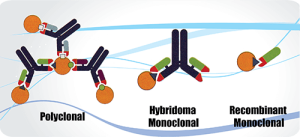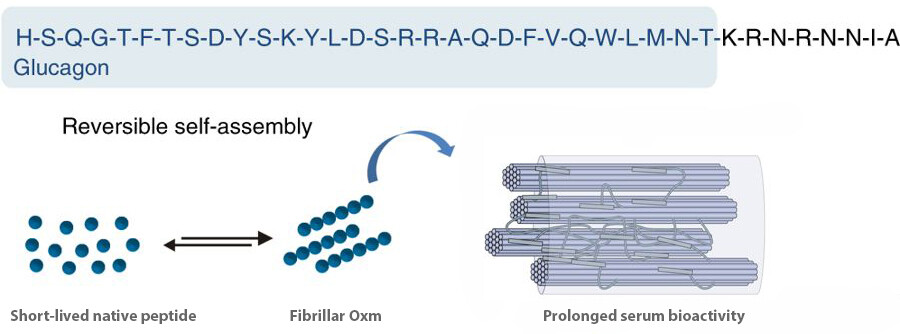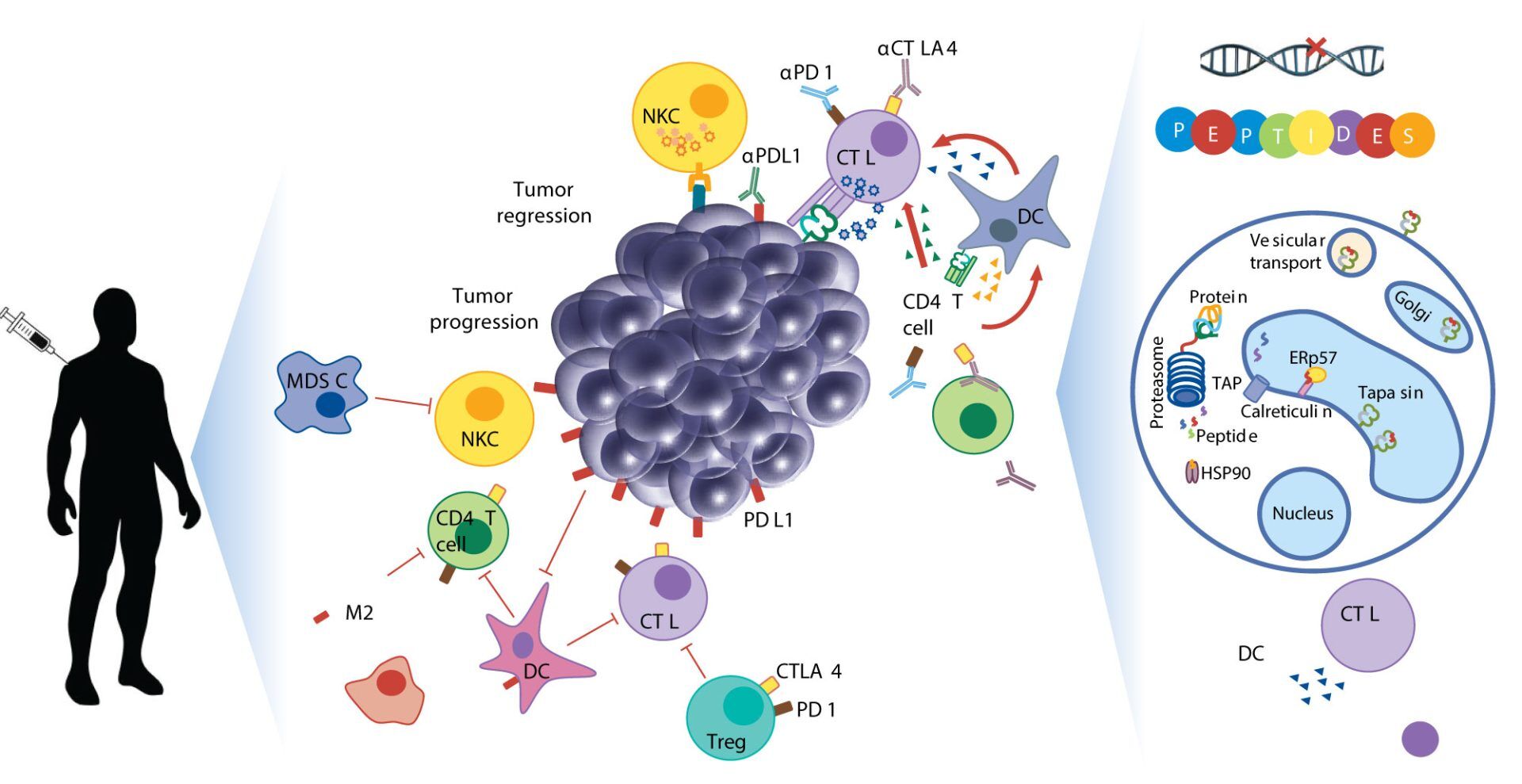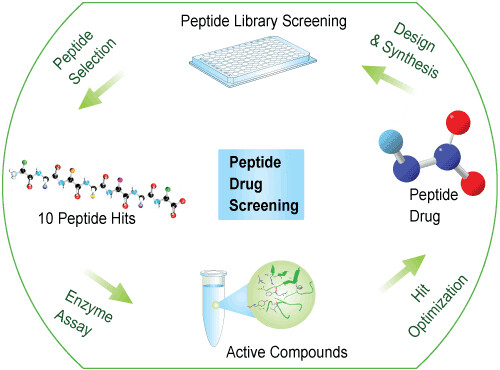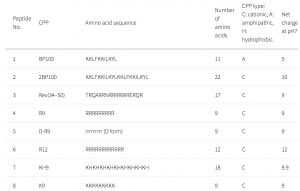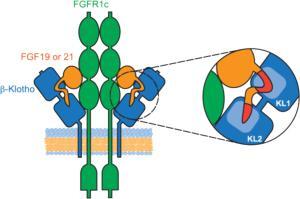How long do peptides last in the fridge? How should peptides be stored?
For long-term storage, the peptide should be kept in solid form in the deep freezer at < -15 °C. If stored at room temperature some peptides containing methionine or cysteine may begin to degrade. Therefore, we recommend storing them at -20C as soon as possible after receiving the package. At -20 or -80, the peptides will remain potent for 6 months or years before beginning to degrade. For short-time storage, a refrigerator (+4 °C) will suffice. Peptides should be protected from intense sunlight. Peptides containing fluorophores should be kept in the dark.
What may happen during the peptide storage?
Some typical degradation reactions or racemization may include the oxidation of Met, Trp, Tyr, or Cys. The deamidation of Asn, Gln, and the C-terminal amide may happen. The aspartimide may form. There might be the cleavage of Asn-Pro. The N-terminal Gln may form pyroglutamine. The dimerization of Trp and Tyr may form.
Are peptides soluble in water?
This is a list of non-polar, hydrophobic, or water-fearing amino acids: Ala (A), Ile (I), Leu (L), Met (M), Phe (F), Pro (P), Trp (W), Val (V).
Peptides containing 50% and more hydrophobic or nonpolar residues as above might be insoluble or only partly soluble in aqueous solutions. In this case, dissolve the hydrophobic peptides in a small volume of 50% (v/v) DMSO, DMF or acetonitrile in water first. Then add water or buffer to the desired concentration.
What is the best way to keep synthetic peptides in solution?
Dissolved peptides are less stable than the lyophilized dry powder. The solutions should be aliquoted before freezing to avoid thawing-refreezing cycles. Peptides containing Asn, Gln, Cys, Met, Trp, Tyr may be less stable because of the possible oxidization. The stock solutions should be in dry organic solvents to avoid premature hydrolysis. The buffer of pH 5-7 is considered as optimum for the stability of the aliquots. The peptide (>95% HPLC purity) solutions with cell cultures are frequently used without any sterilization. If the experiments are typically as short as a few hours, bacterial contamination wouldn’t be a problem.
Why do the dissolved peptides lose their activities? How to prevent peptides from losing their bioactivities?
The oxidation of Methionine yielding the sulfoxide might be the main reason for losing the peptide activity. The rate of sulfoxide formation is sequence-dependent. The best way is to replace the Methionine with its stable isostere Nle. Sulfotyrosine-containing peptides may lose their activity due to the desulfation.
Are peptides containing free Cys supplied as monomers? Will the Cys-containing Peptides be easily oxidized?
LifeTein provides Cys containing peptides as monomers unless specified otherwise. As air oxidation cannot be completely prevented, reducing the peptide before use by treatment with dithiothreitol (DTT) may be helpful to your experiment.
How to dissolve peptides containing disulfide bridges? How do I know if a cysteine in a peptide is free or oxidized?
Basic buffers should be avoided for peptides containing disulfide bridges. Peptides containing free thiol group may oxidize to form dimers or oligomers during storage, even as the lyophilized dry powder at a low temperature. Peptides provided as acetate salt are more sensitive to Cysteine oxidation than the corresponding TFA salt or HCL salt. The disulfide bond formation is rapid at neutral or slightly basic pH. Disulfide bridge formation is reversible. The disulfide bonds can be reduced at basic conditions using DTT. The pH 7-9.5 is the optimum pH range for reductions with DTT. The DTT solutions should be freshly prepared because DTT is readily oxidized.
How to dissolve peptides containing free cysteines?
Peptides containing a single free cysteine will be oxidized at pH>7 to form dimers. This oxidation can be reverted. Peptides containing two or more thiol moieties may yield a mixture of products upon oxidation. The pH 7.5-8 is the best condition for the disulfide bond formation. Hence, peptides containing free cysteines are best dissolved in degassed solvents, e.g. buffers pH<7, diluted acetic acid, 0.1% trifluoroacetic acid in aqueous acetonitrile. DMSO should be avoided, especially with peptide trifluoroacetates.
How to dissolve amyloid beta-amyloid peptide (1-42)?
The amyloid peptide Aβ (1-42), or other amyloid mutants may form insoluble aggregates during the storage. Aβ (1-42) is soluble in hexafluoroisopropanol (HFIP), DMSO, 0.1% aqueous ammonia, 50 mM TRIS ∙ HCl, or 1 mM NaOH. Reconstitution in HFIP or DMSO takes time whereas ammonia rapidly dissolves the peptide. The volatile solvent HFIP is usually evaporated leaving a residue of monomeric, soluble Aβ (1-42), which can be reconstituted with the chosen buffer at pH 7.4 to induce fibrillation. Aβ (1-42) solutions in DMSO or aqueous bases can be diluted directly with a working buffer.
How to dissolve amyloid beta protein (1-40)?
The freshly made Aβ (25-35) and (1-40) are soluble in oxygen-free water. Some old peptides may require the addition of acetic acid for dissolution. Do not dissolve the amyloid peptides in PBS. It is better to try water or 50% acetic acid and then dilute with the working buffer.
Is dry ice required for the shipment of peptides?
Dry ice is not required for the shipment of peptides. The lyophilizates in vacuum-sealed vials are sufficiently stable to tolerate 3-5 days at ambient temperature. Upon receipt, the product should be stored at the recommended storage temperature of -20 or -80.
Can I convert a free peptide or peptide with free acid into the peptide amide?
Unfortunately, the C-terminal carboxylic group cannot be converted to a carboxamide once the peptide is synthesized. The peptide amide has to be synthesized and cleaved in a different method.
Do I expect batch-to-batch variability?
The impurity profile and especially the peptide content can vary from batch to batch, even if we use the same standard protocols of synthesis and purification.
What is the difference between research-grade and GMP-API?
The Research-grade peptides are for laboratory and research purposes only!
They may not be used as drugs for humans. The GMP-APIs are peptide products applicable to humans.
Why are peptides sold as salts?
Most peptides contain the basic functionalities: the guanidino group of Arg, the ε-amino group of Lys, the free N-terminus, and the imidazole moiety of His. These basic functionalities can form salts with acids. All our peptides are provided as trifluoroacetate salts unless specified otherwise. During cleavage from the carrier resin and purification, the peptide will react to the trifluoroacetic acid (a strong acid).
Additional ion-exchange steps are needed to make the acetate salt or HCL salt form peptides. Some acidic peptides, containing Asp, Glu, phosphor group, or sulfotyrosine, can form salts with bases and may be provided as ammonium salts.
How do you purify the peptides? How pure are your peptides?
Peptides obtained by SPPS are usually purified by the preparative RP-HPLC. The HPLC purity of most of our peptides is 95% or above. The lower purities may be expected for peptides containing free Cys, an N-terminal Gln, or sulfated peptides. The purity could be improved with the optimized synthetic and purification methods.
How do you synthesize small peptides?
Dipeptides, tripeptides, and other short peptides are usually synthesized in the solution called Liquid Phase Synthesis.
How do you synthesize peptides?
Fmoc- SPPS (solid-phase peptide synthesis) is the main method. The peptide is elongated starting from the C-terminus to the N-terminus of the sequence. An inert, insoluble but swellable polymer resin is used and the amino acids are added in the C→ N direction. After each coupling step, the Nα-blocking group is removed through repetitive protection and deprotection steps. LifeTein’s peptide synthesis method is fully automated.
How do you denote amino acids?
H- stands for an N-terminal free amino moiety, -OH for the unmodified C-terminal carboxyl group. H-Hyp-OH stands for – L-cis-hydroxyproline; H-Nle-OH is – L-norleucine;
Pyroglutamyl is abbreviated as Pyr. The natural peptides consist of L-amino acids. The D-enantiomer and the racemate are designated by -D- and -DL-, respectively.
What do L- and D-enantiomers mean?
All α-amino acids are asymmetric molecules except glycine. They can be obtained in two forms called enantiomers. Enantiomers differ considerably in their biological activity.
The D-enantiomer (D: dexter) represents the mirror image of the L-enantiomer (L: laevus). D- and L-enantiomers do not differ in their physical properties. Most L-amino acids rotate the light counterclockwise.
How to dissolve the peptide?
Families of Amino Acids:
Basic: Arg (R), His (H), Lys (K)
Non-polar (hydrophobic): Ala (A), Ile (I), Leu (L), Met (M), Phe (F), Pro (P), Trp (W), Val (V)
Polar uncharged: Asn (N), Cys (C), Gly (G), Gln (Q), Ser (S), Thr (T), Tyr (Y)
Acidic: Asp (D), Glu (E)
The solubility of a peptide is primarily dependent on the physical properties of its amino acids.
Basic peptides: The number of basic amino acids including the N-terminal amino group is more than the number of acidic amino acids including the C-terminal carboxyl moiety. The basic peptides may be dissolved in a small amount of an acidic solvent such as acetic acid or trifluoroacetic acid (TFA) and then diluted to the desired concentration.
Acidic peptides: The number of acidic amino acids including the C-terminal carboxyl group is more than the number of basic amino acids including the N-terminal amino group. The acidic peptide may be reconstituted in a small amount of a basic solvent such as 0.1% aqueous NH3 and then diluted with water to the desired concentration. The peptides containing free cysteines should be dissolved in the degassed acidic buffers because the thiol moieties could be rapidly oxidized at pH > 7 to disulfide bonds.
Neutral or highly hydrophobic peptides containing a high proportion of polar uncharged amino acids and/or hydrophobic amino acids should be dissolved in a small amount of an organic solvent such as DMSO, DMF, acetic acid, acetonitrile, methanol, propanol, or isopropanol and then diluted with water (or buffer) to the desired concentration.
Denaturating agents, such as urea or guanidinium hydrochloride may be used to solubilize peptides which tend to aggregate. The reconstitution of the aggregated peptide may take up to several hours. Sonication for several minutes in a water bath may be helpful to accelerate the dissolution of larger particles. The peptides containing Trp, Met, or Cys residues require special care to avoid oxidation.
What is peptide folding? Why do polypeptide chains fold?
Peptide folding is the process by which a peptide structure assumes its functional shape or conformation. By coiling and folding into a specific three-dimensional shape, the peptides can perform their biological function. The amino acids with hydrophobic side chains tend to end up clustered at the core of the structure so that they are out of contact with water. Covalent disulfide bridges can affect the shape of a protein. Protein folding is a spontaneous process because the Gibbs free energy is negative.
What are the four levels of protein folding?
There are four stages of peptide or protein folding, primary, secondary, tertiary, and quaternary. The secondary structure is the protein beginning to fold up. It can have two types of structure: the alpha helix, a coil shape held by hydrogen bonds in the same direction as the coil.
Why does peptide unfold at high temperatures?
Heat can be used to disrupt hydrogen bonds and non-polar hydrophobic interactions. This occurs because heat increases the kinetic energy and causes the molecules to vibrate so rapidly and violently that the bonds are disrupted.
What factors can disrupt the peptide structure and thus denature the peptide or protein?
Changing in pH and salt concentration will alter electrostatic interactions between charged amino acids. Higher temperatures reduce the strength of hydrogen bonds.
The presence of the reducing agents will break disulfide bonds between cysteines.
However, none of these agents breaks peptide bonds, so the primary structure of a protein remains intact when it is denatured.

